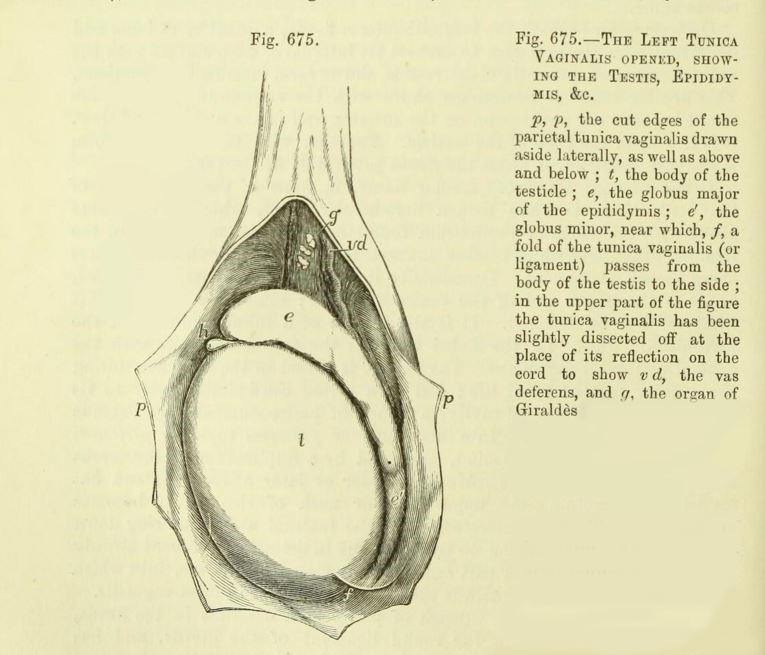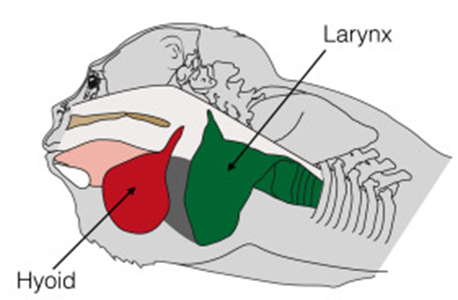When Sperm Compete, Nature’s Call Leads to Bigger … Testicles
“[In humans, the testes] are from an inch and a half to two inches long, about an inch and a quarter from the anterior to the posterior border, and nearly an inch from side to side. The weight of each varies from three-quarters of an ounce to an ounce, and the left is often a little the larger of the two.”
—Quain’s Elements of Anatomy, 1867
Success in the living world is all about reproduction. For living animals with internal fertilization (i.e., within the female’s body), reproductive success is determined by many factors, one of which is males’ ability to fertilize females’ ova (eggs). This depends not only on a male identifying a mate, engaging in copulatory behavior (sex), and inseminating a female, but also on what happens after copulation and insemination, especially when there is sperm competition.
WHY SPERM COMPETITION?
Females only require the healthy sperm of one male to put them on the path to reproductive success; however, depending on the species’ mating system, females may copulate with more than one male during or around the time they are ovulating (producing mature eggs). A species’ mating system depends in part on female mate choice—how she chooses mates, which ones she chooses, and how many she chooses.
If a female chooses to mate with more than one male during her ovulatory cycle, sperm competition, in which the males’ sperm compete to fertilize the female’s ovum, may ensue. Species in which females commonly have multiple male partners, such as chimpanzees and bonobos, tend to have higher rates of sperm competition. Species prone to monogamy, like gibbons, or in which multiple adult females tend to mate with a single male, like gorillas, tend to have lower sperm-competition rates.
SIZING UP THE COMPETITION
Over generations, selection should enhance both males’ ability to inseminate females and their odds of successful paternity, especially when there is risk of sperm competition. So how does nature adapt when males need to ensure that their sperm are the sperm?
One potential solution to the problem is to make more sperm—the more sperm one has compared to a competitor, the better the odds of successful fertilization. Increased sperm production requires more massive sperm factories, or testicles. So larger testes mean more sperm, greater reproductive success, and, likely, offspring with relatively larger testicles, too. Thus, male chimpanzees and bonobos have evolved relatively large testicles compared to their body size, whereas gorillas and gibbons have relatively smaller testicles.
The relative size of human testes is intermediate between traditionally monogamous and polygamous species. Many researchers have used this as evidence of some degree of sperm competition in humans, inferring something other than monogamy for the species.
Recently, scientists have shown that certain traits of human sperm, such as sperm concentration, speed, and rates of abnormality, are more similar to gorillas’ sperm than to chimps’, which suggests low sperm competition in humans. It could be that modern humans’ relative testis size does not correlate with modern levels of sperm competition; risk of sperm competition and/or testis size may have changed over the course of human evolution. It could also be the case that relatively large testicles provide another, not yet fully understood, benefit to modern Homo sapiens males.
WHY ELSE MIGHT SIZE MATTER?
It turns out there is a relationship between testis size in primates and genome evolution.
Alex Wong examined the genetic sequences of 55 primate species and compared the rates of substitutions (changes in the “letters” of the DNA) in the sequences to the weight of the animals’ testes. The study showed that primates with larger testes had higher rates of genome evolution, probably as a by-product of greater sperm production and competition (in other words, the more sperm produced, the greater the chances of a mutation in the DNA sequence). Genetic mutation is one of the primary mechanisms of evolution—without variation in a population, natural selection cannot act.
On another note, a recent study found that species of howler monkeys with larger testes had smaller hyoids (the hyoid is a bone in the neck involved in producing vocalizations). “All howler monkey species have a highly modified larynx with a greatly enlarged cup-shaped hyoid bone containing an air sac, which is thought to function as a resonating chamber for their calls,” according to the authors. Therefore, species with smaller hyoids produced less amplified, or softer, vocalizations.
What’s the connection to testes size? The hyoid-vocalization-testes combination reflects the monkeys’ social structure—a smaller hyoid, softer vocalizations, and larger testes equals more males in a group. The researchers hypothesize that with more males in a group, there is less of a need to ward off males from other groups with loud calls (in other words, there is strength in numbers). No need for loud calls? No need for a large hyoid. But, more males within a single group means greater potential for sperm competition, and thus larger testes.
COMPETITION AT MANY LEVELS
As the evolutionary biologist Ernst Mayr pointed out in his book The Growth of Biological Thought, “the crucial event in [Charles] Darwin’s mind, when reading [Thomas] Malthus’s statement on fertility [in the 1830s], was that he finally fully realized how important is the competition among individuals of the same species, and how entirely different the consequences of this competition are from typological competition among species.”
But Darwin could not fathom at that time that competition among individuals extended to competition between individual sperm, as the process of how a sperm fertilizes an egg was not described for another two decades.



































